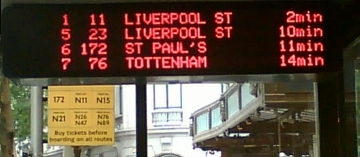This is the first of several episodes featuring content from TRB Annual Meeting sessions in Washington, DC, starting with the common themes of transport data, automation and the idea that technology will solve more than a few of our problems. From the sessions, we learn how to successfully insert a light rail transit (LRT) line into a city streetscape dominated by car culture, informed by experience in small French and Spanish cities; why industrial design matters at every stage of a project; and the importance of informal social paths (or, why attempting to corral pedestrians into designated crossing locations makes walking less safe). Do you have thoughts on these topics? Of course you do, so share them with the world! Suggest other viewpoints, new perspectives and ideas for further research, show topics and/or guests, by emailing feedback@criticaltransit.com or using the contact form or those social media tools.
Find me at Planning Camp on February 1 in Philadelphia, at the Human Transit talk in New York on February 6, and otherwise riding trains and buses around the northeast.
Finally, if you enjoy this time dump very useful transit project, please help support my work by sharing it with your friends and colleagues, leaving a review on iTunes and other places, and consider sponsoring an episode if you are able to.


